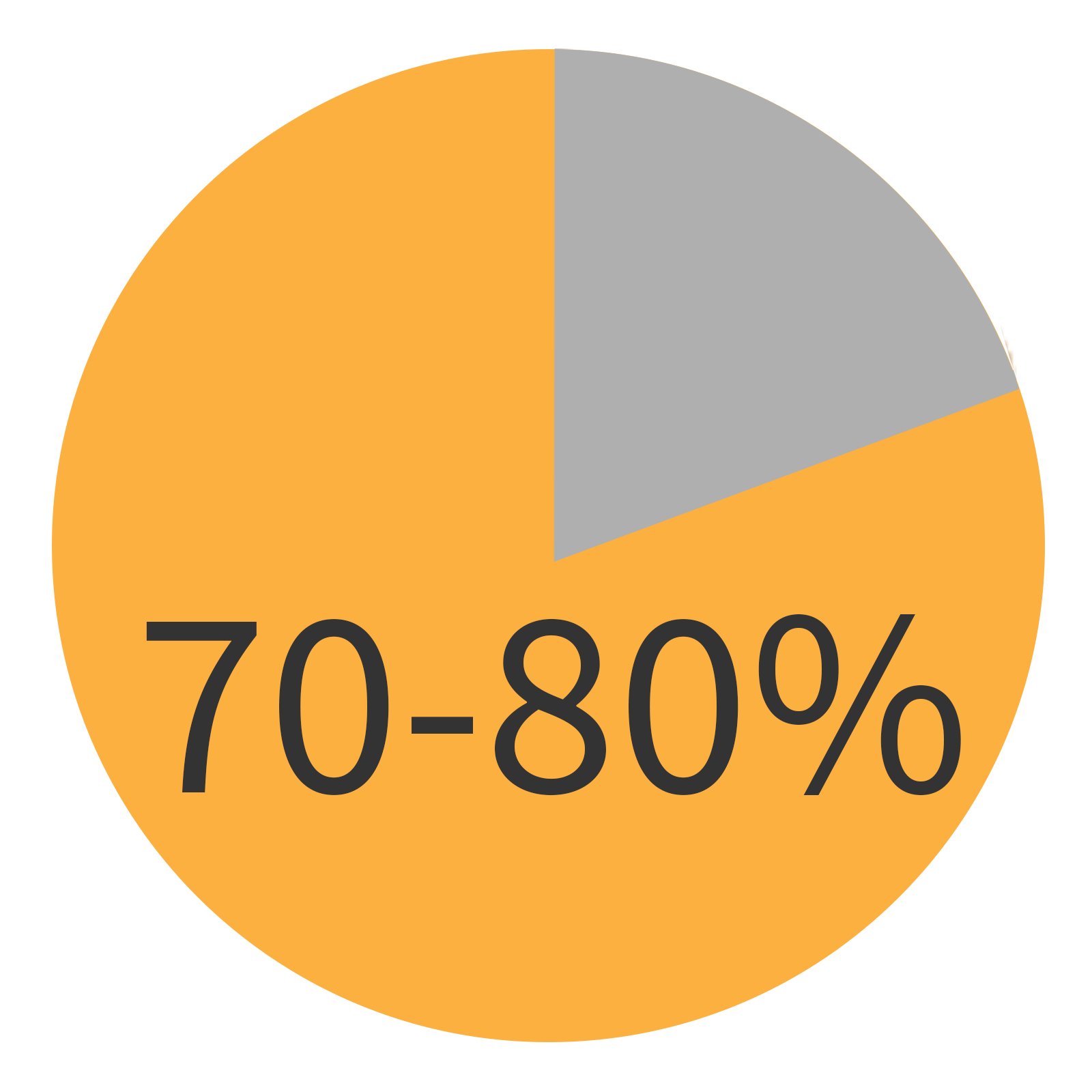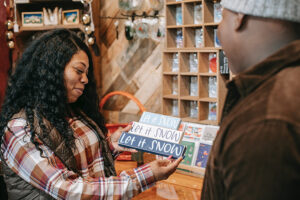Do Women Consumers Find Your Store Appealing?
More Hunter Than Shopper
As long as researchers have been studying the habits of shoppers, one thing has become apparent. Men and women shop very differently.
For men, the object of shopping is to quickly fill a need and move on to the next thing. One expression used to describe male shopping behavior harkens back to our days as cave dwellers adorned with animal skins. Find it, kill it, drag it home.
Some habits just don’t die.
There’s Joy in the Journey
Women, on the other hand, take a sophisticated approach to shopping. Spending time making comparisons between like items, weighing the pros and cons, and imagining how she might put a product to use is her preferred way of making a buying decision.
Shopping can even be fun for women, especially when they do it with a friend or as a group. Women advise each other and protect each other from the tragic purchases they are likely to regret.
Provisioning has long been a task women consumers have been responsible for. They do it with skill and dedication. They take pride in finding just the right thing while paying close attention to price.
By contrast, most men seem to be more concerned with speed than accuracy. They don’t spend a lot of time scrutinizing their purchase. Price is often less of a factor. Putting an end to the agony of shopping as quickly as possible makes men more susceptible to being upsold. He will agree to almost anything if it will get him out of the store faster.
 Why Are Women Consumers so Important?
Why Are Women Consumers so Important?
Good question. Here’s something to think about.
According to Bridget Brennan, author of the book Why She Buys: The New Strategy for Reaching the World’s Most Powerful Consumers, women influence 70 – 80% of all consumer purchases.
Even if women aren’t making the purchase themselves, they have a say in the vast majority household buying decisions.
Pretty shocking, huh? Take a moment. Catch your breath.
The clout women consumers have is greatly multiplied when you consider that women often shop, not only for themselves, but for their spouses, kids, other family members, friends, co-workers, and others.
Even though women have a history of being adept shoppers, in the modern age this responsibility must be wedged in somewhere between jobs, kids’ activities, their commute, social commitments, and other aspects of daily life. Anything a retailer can do to make the shopping experience easier for the women that enter your store is likely to pay dividends in the future.
Knowing this, are you doing all you can to service such influential members of the buying public?
Here are three things you can do to make your store more attractive to this powerful demographic.

70-80% of ALL Purchases Are Influenced By Women
3 Ways to Impress and Retain These Important Influencers
1. Widen Those Aisles
Providing enough space in your aisles to allow customers to pass each other without bumping into one another is common sense, but there are some compelling reasons to add extra space between display shelving in areas where you want women to spend more time.
In his extensive research on customer behavior, Paco Underhill, author of Why We Buy: The Science of Shopping, found that women will spend more time in an aisle where they can move around comfortably. The extra space allows her to get a sense of what the aisle has to offer, read labels, and compare similar products.
By watching customers hemmed into crowded isles, Underhill noted that customers were reluctant to examine anything at or much below waist level. It turns out women, and men to a lesser extent, seriously dislike being bumped from behind.
One of Underhill’s best-known discoveries, the “butt-brush factor”, shows how annoyed shoppers become after being jostled a couple of times from the rear. Once irritated, shoppers won’t hang around until the crowd thins out. They often leave without buying the product they came in for.
Women consumers tend to be patient and inquisitive shoppers. If she’s able to examine the contents of an aisle without unwanted contact from other shoppers, the more time she’ll spend focused on her task. The longer she’s in the aisle, the more likely she is to discover something she can’t live without.

2. Have Human Help
Women don’t have a problem asking for help when they need it. They don’t see this as an affront to their abilities or intelligence. Instead, asking for help is seen as a more efficient way of getting things done.
A survey by the Wharton School and the Verde Group called Men Buy, Women Shop found that 29% of their women shoppers found “lack of help when needed” a top problem. An analysis of the study’s data shows that about 6% of all female shoppers would not return to a store where they had difficulty getting assistance.
The same study also found that women consumers recognize a sales associate’s product knowledge and value the associate’s ability to help her find a product that’s best suited to her needs. That appreciation was tied directly to store loyalty.
Stores that are considering trying to save money by doing more with fewer employees could be alienating their female customers without realizing it.
 3. Display the Possibilities
3. Display the Possibilities
Lowe’s and The Home Depot figured out how to bring women into the hardware market some time ago. In addition to nut, bolts, power tools, sheetrock, and many of the other items found in a traditional hardware store, these retailers started selling “lifestyle.”
Walk into your local home improvement center for a tub of spackle and you’ll pass by aisles stocked with floor coverings, lighting fixtures, window treatments, major appliances, and literally tons of other items needed to make a house a home.
To help shoppers visualize how these items might look after installation, mock kitchens are constructed to showcase cabinets, counter top materials, faucets, sinks, and under cabinet lighting. Make-believe bathrooms show off the latest tubs, tile, shower enclosures, and towel bars.
Women consumers initiate 80% of all home improvement projects and represent half of Lowe’s customer base, according to the company.
By broadening the type and number of products they offer and displaying those products in a way that appeals to the world’s principal shoppers, these companies have extended their reach and strengthened their bottom line.
The Takeaway
Women consumers aren’t just shoppers. They’re influencers. Generally speaking, women expect more from the retail environment.
As a retailer, you may have to make some adjustments to customer service, store layout, merchandising, and other areas to meet those higher expectations.
By raising your game in these areas, you don’t compromise your male customers in any way. Instead, you improve the retail experience for all your customers.
George Maginnis
Author


